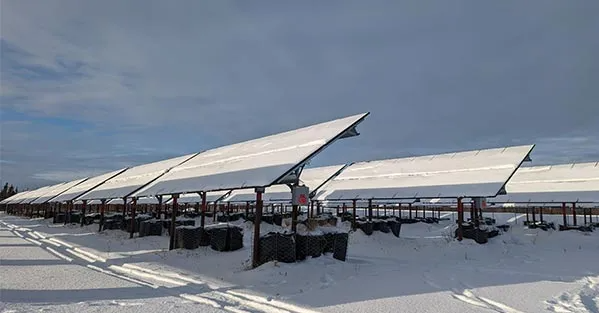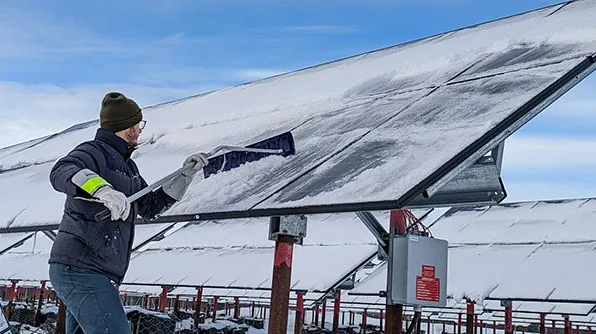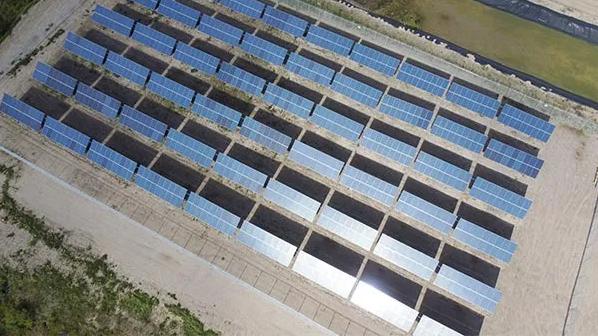Those who believe that a solar farm can generate continuous power without the need of maintenance could be heading towards a cold winter. Having a robust maintenance strategy will save time, money, and headache.
Solar energy production can be hindered without a solid maintenance program in place. This can also lead to major capital expenses and safety issues in the future. For example, a solar array requiring critical repairs can cost thousands of dollars each day if the situation is not handled with urgency. Without adequate training, clients and investors will complain about the lack of revenue being generated by the faulty system.
Having a maintenance process in place will result in:

Administrative
The purpose of an administrative operation is to manage the billing and accounting process. This includes handling warranty claims which can be worth thousands of dollars over purchasing a replacement component. Administrative operation should consider the long-term staffing, budget, and training required for continued support and minimized downtime.
Having documented instructions to outline procedures and contacts makes a big difference in the effectiveness of your maintenance strategy. It is recommended to create a qualified list of trades that will be available if an event occurs. For larger solar installations, one full-time maintenance operator should be responsible for overseeing the system. It is essential that they have the capabilities to manage basic accounting.
Monitoring
Daily monitoring of solar production is important for keeping tabs on the revenue trends, alarm triggers, and having the ability to diagnose problems in real-time. Production trends can be useful for planning future maintenance when the system degrades. Use production reports to confirm that billing is being processed correctly.
Monitoring involves measuring the performance of the system which involves identifying irregular trends. Using alarm triggers will quickly identify when production halts. The alert will provide insight into the issue and limit the side effects of downtime. On-site inspections will also be required to spot any structural hazards. Consider implementing an automated monitoring software that will trigger alerts if performance issues happen. These programs can issue weekly reports that highlight performance trends.
Preventative maintenance

Preventative maintenance for solar assets is a proactive strategy that reduces the chance of failure resulting in unplanned downtime. A preventative strategy can include scheduled cleanings, component replacements, and system repairs. Overall, it should increase the operational performance of the equipment. Preventative maintenance can be scheduled in advance and recorded as both long and short-term expenses.
People once held the belief that solar panels do not require any cleaning as the structural incline combined with precipitation would clean it naturally. Unfortunately, this is not true where streaks, algae, and dust can build up and decrease production from 1.5% to 30%. Without routine maintenance, the likelihood will increase for broader issues to occur that can negatively impact energy production and user safety.
Routine inspection, testing electrical connections, and checking structural integrity for rust and corrosion are all elements of a predictive maintenance plan. A good starting point is to refer to manufacturing guidelines for inspections which can provide directions for cleaning, maintenance documentation, and clearing the surrounding vegetation around the panel racking. Depending on the location, a full-time security officer may be required or a locking system that is accessible and secure.
Corrective maintenance
Additional budget must be included for corrective maintenance to account for unplanned events. To minimize loss of revenue, these incidents should be acted upon immediately with the right people. The most likely event to expect early on is a failed inverter or loss of an individual string due to faulty wiring. There are, however, other types of unplanned events such as vandalism, high winds, and hail.
While it cannot be predicted when these events happen, a checklist will offer a simple process to address them including which stakeholders to call, safety considerations, tools and equipment needed. Keep a series of spare parts available in a dry storage area for fast deployment in the event of an emergency. The list does not have to be too complicated, but it should be regularly checked and updated every year.

Getting started
Starting an operations and maintenance plan begins with setting performance goals for the system including a benchmark to understand when action must be taken. Develop a criterion that includes:
Testing frequency
Cleaning schedule
Response time of service technicians
Safety training
On-site stock
Process to qualify a service provider
Documentation plan and frequency at which it will be updated
Record keeping location and backup plan (if digital)
In the event of a breakdown, who will handle the repairs? Who should be informed about these decisions? Establishing a responsibility matrix that delegates tasks to appointed decision-makers will streamline the process. Codes and standards such as IEC 62446 will assist in developing a plan.
Providing a checklist to service providers will outline directions, points of interest, and frequency of when to operate. Administering a training schedule will ensure that the team is up-to-date on proper safety procedures and how to maintain a clean system. For example, using solvents or brushes on a solar panel can damage the panel surface and opening combiner boxes without adequate protection can be hazardous.
These are a few things to consider when planning your solar farm maintenance and operations procedures. Putting the time and effort into organizing these tasks and having it on record will go a long way in protecting your renewable investments.